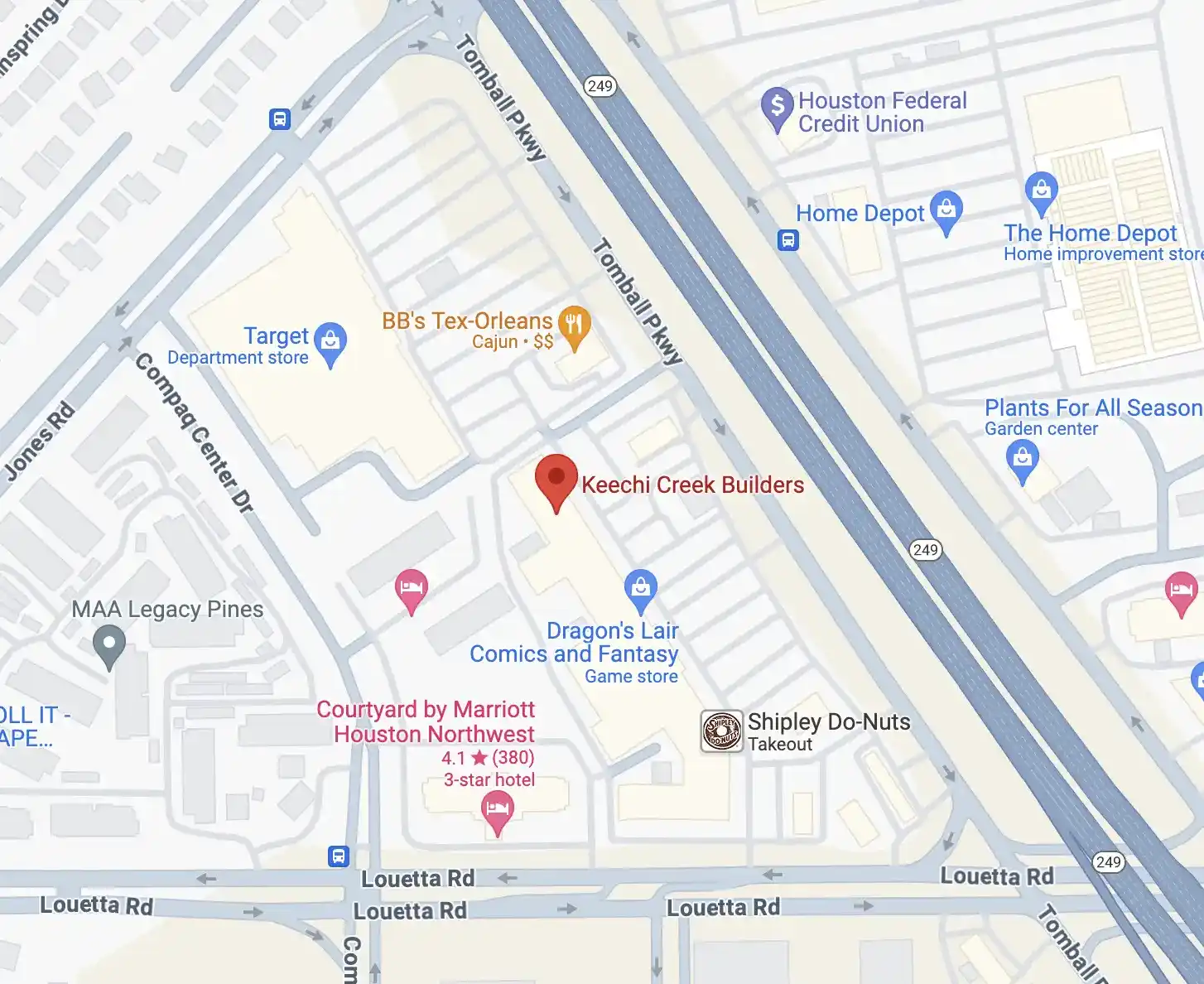Creating your dream home with custom remodels involves several key steps, including defining your vision, establishing a realistic budget, and collaborating with experienced designers. Begin by selecting an architectural style that resonates with your aesthetic preferences while considering functional needs such as efficient floor plans. An organized remodeling process integrates detailed planning, timelines, and clear communication with contractors to guarantee adherence to goals and budget. Finally, the integration of cohesive materials enhances both durability and appeal. By understanding the various aspects of home design, homeowners can achieve a remodel that not only fulfills their desires but also elevates their living experience. More insights await to guide your journey.
Key Takeaways
- Define your renovation goals early to ensure aesthetics and functionality align with your lifestyle and increase home value.
- Choose an architectural style that sets the foundation for your home's aesthetic and encompasses durable exterior materials for lasting appeal.
- Collaborate with experienced designers to create efficient floor plans that maximize space while capturing the essence of your desired style.
- Establish a realistic budget that considers materials, labor, permits, and unexpected expenses to ensure financial feasibility throughout the remodeling process.
- Regularly assess progress and maintain open communication with contractors to address any issues promptly and adhere to your vision.
Key Elements of Custom Remodeling
Custom remodeling transforms your vision into reality by focusing on key architectural elements that shape the integrity and functionality of your home. At the core of any successful remodeling project lies the careful selection of an architectural style that suits your personal preferences, which serves as the foundation for your home's overall aesthetic. Complementing this vision, decisions regarding exterior materials, such as siding, stone, and roofing, should be made early in the process to guarantee cohesion and durability. A well-conceived floor plan maximizes the efficient use of space, incorporating essential areas like bedrooms, bathrooms, and communal living zones that promote interaction. Additionally, blueprints play an indispensable role, detailing layout and structural elements, which are vital for maintaining structural integrity. Making decisions early about materials and finishes can significantly streamline the remodeling process and reduce potential delays. To further enhance your home, consider incorporating custom designs that can address specific homeowner needs and preferences.
Incorporating universal design principles enhances accessibility, while features like open floor plans foster an inviting atmosphere. Selecting quality custom finishes not only adds luxurious touches to your remodeling project but also contributes to its longevity. Award-winning custom builders in Houston often emphasize attention to detail, ensuring that every element of your home meets high standards of quality. By prioritizing both design considerations and proper material selection, you can create a home that not only embodies your unique style but also meets high standards of functionality and durability.
Steps in the Remodeling Process
As you commence the remodeling journey of creating your dream home, understanding the fundamental steps in the remodeling process is vital for a successful outcome. This includes finding the right designer who aligns with your vision, accurately budgeting for renovations to guarantee financial feasibility, and finalizing design choices that reflect your style and needs. Each of these components plays a pivotal role in transforming your ideas into a tangible reality, making sure that your remodel is both aesthetically pleasing and functionally sound. Clear objectives are crucial for ensuring functionality and aesthetics throughout the project. Additionally, paying attention to flow of activities within your spaces can significantly enhance daily tasks and experiences. Engaging in a unique design-build process facilitates collaboration and integration of your vision into the overall design, ensuring a personalized approach to your remodel.
Finding the Right Designer
Steering through the remodeling process begins with the crucial step of finding the right designer. The ideal designer should possess strong designer qualifications, demonstrating extensive expertise and experience in home remodeling. Look for professionals who have successfully completed numerous projects, as their background will provide insights into their capabilities in evaluating project scope, timelines, and labor requirements.
A key factor is their familiarity with current design trends, which can greatly impact the aesthetic and functional aspects of your remodel. Engage with designers who can offer a clear design brief and collaborate effectively to translate your ideas into actionable plans. Additionally, verify that your selected designer can address unique requirements, ensuring the final design aligns with your specific needs. It's also important to ensure the designer can incorporate eco-friendly materials, as this choice may enhance the sustainability of your project.
Research is essential; seek referrals from trusted sources such as friends and family, and pay attention to client reviews and testimonials. Reputable designers often have a proven track record, reflected in positive online ratings and acknowledgment within the industry. Additionally, verify that the selected designer has effective project management strategies, maintaining discipline and attention to detail throughout the remodeling process. This thorough approach will not only lead to a successful transformation of your home but also enhance the overall experience.
Budgeting for Renovations
A well-thought-out budget is fundamental when starting renovations for your home, complementing the expertise of the designer you've chosen. Begin by defining your goals, whether they involve increasing home value, enhancing functionality, or updating aesthetics. Set a realistic budget that encompasses all costs, including materials, labor, permits, and a contingency fund to account for unexpected expenses. Assess the cost of your project; significant upgrades may range from $100 to $200 or more per square foot.
Budget allocation takes precedence, allowing you to prioritize improvements based on your objectives and financial capabilities. For instance, necessary tasks should receive funding before aesthetic considerations. Tracking expenses throughout the renovation is essential; thus, maintain an updated ledger that reflects spending against your initial budget. Regular reviews with your contractor will help guarantee you remain aligned with cost expectations. Additionally, consider obtaining multiple estimates from local contractors to ensure accurate cost assessments.
Incorporate a contingency fund of 15% to 20% into your budget to address unforeseen challenges. Flexibility is critical; be prepared to adjust plans and seek cost-cutting measures if necessary. By effectively managing your budget, you can create a beautiful and functional space while maintaining financial stability throughout the remodeling journey.
Finalizing Design Choices
Upon reaching the final stages of the remodeling process, carefully finalizing design choices is crucial to guarantee a successful execution of your vision. This phase involves synthesizing your design preferences with practical considerations to create a cohesive plan. Begin by confirming architectural style and floor plan, making sure they align with your lifestyle and comply with any neighborhood regulations, such as homeowner association guidelines.
Next, focus on material selection, which encompasses both major elements like cabinets and countertops, as well as smaller details, including paint colors and hardware. Engage your design team for expert guidance, as they can curate options that fit your aesthetic aspirations and budgetary constraints. It is essential to compile detailed specifications within your final design document, enabling accurate pricing based on selected products.
Furthermore, prepare permit-ready drawings and a thorough estimate that consolidates bids from contractors and vendors. The final review involves evaluating the design and budget collectively to secure approval, thereby facilitating the shift into the construction phase. A thorough approach to finalizing design choices not only guarantees alignment with your overall vision but also prepares your project for a seamless execution that brings your dream home to life.
Planning and Timeline
Effective planning and establishing a realistic timeline are essential components of a successful home remodel, as they help guarantee that the project adheres to both budgetary constraints and anticipated completion dates. Key phases of the remodeling process, from initial assessments and design conceptualization to construction and final inspections, require careful management to address potential delays and maintain momentum. By developing a detailed project schedule that accounts for necessary permits, material procurement, and contractor availability, homeowners can better navigate the complexities inherent in custom remodels while achieving their objectives. Additionally, understanding ARC compliance requirements is crucial for ensuring a smooth approval process and minimizing potential setbacks.
Setting Realistic Timelines
Setting realistic timelines is essential when beginning a custom remodel for your dream home. Understanding the various factors that impact a renovation timeline empowers homeowners to manage expectations and facilitate a smoother process. Consider the following aspects before establishing your schedule:
- Scope of Work: A broader project can lead to significant timeline adjustments.
- Weather Conditions: Unpredictable weather may cause unavoidable delays.
- Specialty Work: When specialized contractors are involved, the timeline may extend.
- Permits and Inspections: Waiting for necessary permits can hinder project progression.
Renovation timelines can vary greatly, with typical projects like a full home renovation taking about 8 to 10 weeks, while a kitchen remodel may require 3 to 6 months. Acknowledging these variations allows for the establishment of realistic expectations, mitigating frustration as the process unfolds. By planning and anticipating possible challenges, including material procurement delays or unexpected issues, homeowners can effectively adjust timelines as necessary, ensuring a successful remodel. This strategic approach lays the groundwork for a seamless shift from initial planning to the final touches on your transformed space.
Key Phases Overview
A well-organized remodel requires careful consideration of the key phases involved in planning and execution. First and foremost, conducting an initial property assessment with a professional is essential to document any structural issues or aesthetic improvements needed. From this assessment, homeowners should define their renovation goals, which may include enhancing functionality, increasing property value, and improving energy efficiency.
Once renovation goals are established, developing a preliminary plan is critical. This plan should outline desired changes, material preferences, and a clear vision of the final result. Financial planning follows, during which a thorough budget that accounts for material and labor costs must be determined. Engaging with architects, designers, and contractors becomes imperative to guarantee compliance with building codes and practical feasibility.
During the design phase, a detailed design agreement is crafted, encompassing the scope of work, timeline, and budget range. The selection of finishes and materials should occur next to avoid budget overruns. Important steps, such as acquiring permits and creating approved architectural plans, pave the way for the construction phase, which involves executing design strategies, regular progress monitoring, and guaranteeing all work aligns with the established renovation goals.
Understanding Home Design
How do the principles of home design shape our living spaces? Understanding these principles is fundamental to creating environments that are not only visually appealing but also functional. Effective home design hinges on key concepts that promote both space functionality and aesthetic balance, guaranteeing that each area of a home resonates with its intended use and style.
- Balance: Guarantees visual equilibrium by evenly distributing elements.
- Unity and Harmony: Achieved through cohesive styles and forms.
- Proportion and Scale: Crucial for creating a sense of belonging among elements.
- Functionality: Directly affects the quality of life of occupants.
When initiating a custom remodel, one must consider how design choices affect everyday activities. Each element within a home should enhance the occupants' lifestyle, reinforcing the need for thoughtful architectural decisions and careful space planning. Furthermore, integrating personal preferences into the design process transforms a mere house into a sanctuary that reflects the inhabitants' aspirations. By prioritizing these principles of home design, you can cultivate a harmonious living space that balances beauty with practicality, ultimately enriching your quality of life. Additionally, utilizing AutoCAD and 3D renderings in the design process enhances visualization and decision-making, ensuring that your dream home becomes a reality.
Managing Your Remodel
Effective management of a remodel is fundamental for transforming a vision into reality, guaranteeing that each phase of the project unfolds smoothly and meets established objectives. Successful project execution begins with defining the project scope, setting a realistic budget and timeline, and hiring experienced professionals whose skills align with your vision. Effective contractor communication is critical; guaranteeing that all parties are informed of updates, expectations, and potential remodel challenges helps mitigate misunderstandings.
As the project progresses, it is essential to proactively track expenses and address any deviations from the initial plan. Prioritizing tasks and creating a contingency fund can help navigate unexpected costs that may arise during the remodel. Continuous monitoring of progress is necessary, allowing you to adjust the timeline as needed and maintain adherence to your overall vision. Regular documentation through photographs and schedules enables you to witness the transformation and guarantees accountability among contractors.
Finally, as you approach closure, conduct rigorous inspections and address any outstanding tasks or adjustments. Securing final permits and confirming satisfaction with the remodel solidifies a successful transformation and lays the groundwork for evaluating the project's overall effectiveness. Additionally, maintaining high standards of craftsmanship throughout the project ensures that the results reflect your desired aesthetic and functional goals.
Organizing Your Ideas
After managing the various aspects of your remodel, organizing your ideas becomes a pivotal step in refining your vision and ensuring cohesive execution. This process allows you to gather visual inspiration, analyze design trends, and utilize collaborative tools effectively. Consider employing the following methods to enhance your project organization:
- Create Idea Boards on digital platforms like Houzz and Pinterest to categorize inspirations.
- Use a 3-ring binder for physical materials, integrating tab dividers and page protectors for easy reference.
- Photograph ideas using your mobile device, organizing these images into albums for quick access.
- Develop conceptual sketches or blueprints to visualize layout and design choices. Additionally, incorporating custom architectural floor plans can help articulate your vision more clearly with precise structural elements.
Frequently Asked Questions
How Do I Choose the Right Designer for My Remodel?
To choose the right designer for your remodel, assess their qualifications and experience relevant to your project style. Review past work, communication effectiveness, and guarantee they align with your vision, goals, and budgetary considerations.
What Are Common Mistakes to Avoid During Custom Remodeling?
Common mistakes to avoid during custom remodeling include design pitfalls, inadequate planning, ignoring functionality, and budget overruns. Establishing clear goals, assembling a professional team early, and maintaining communication can greatly mitigate these risks.
How Can I Ensure My Remodel Stays on Budget?
To guarantee your remodel stays on budget, implement cost-saving strategies such as accurate budget tracking, prioritizing essential projects, seeking competitive bids, and regularly reviewing expenses to adjust accordingly throughout the remodeling process.
What Is the Typical Timeline for a Custom Home Remodel?
The typical timeline for a custom home remodel varies based on complexity and size, typically encompassing design phases over several weeks, followed by construction and installation phases, achieving key project milestones within 3 to 12 months.
How Do I Handle Unexpected Issues During the Remodeling Process?
Handling unexpected issues during remodeling involves evaluating the situation promptly, consulting professionals, and reviewing your budget to accommodate unexpected costs. Clear communication with contractors can mitigate project delays, ensuring a smoother resolution to unforeseen challenges.
Conclusion
In summary, the journey to creating an ideal home through custom remodeling necessitates thoughtful consideration of key elements, adherence to systematic processes, and effective management strategies. By thoroughly understanding home design principles, establishing a realistic timeline, and efficiently organizing ideas, homeowners can guarantee a seamless renovation experience. Ultimately, a well-executed custom remodel not only enhances the functionality and aesthetic appeal of a residence but also increases its overall value and livability for years to come. For more information on how to embark on your custom remodeling journey, call Keechi Creek Builders or visit their website.










![prism2023 winner logo[8]](https://pub-ae3315f928524d56aa82b17b9f427894.r2.dev/2024/11/prism2023-winner-logo8-e1731607791571.webp)
